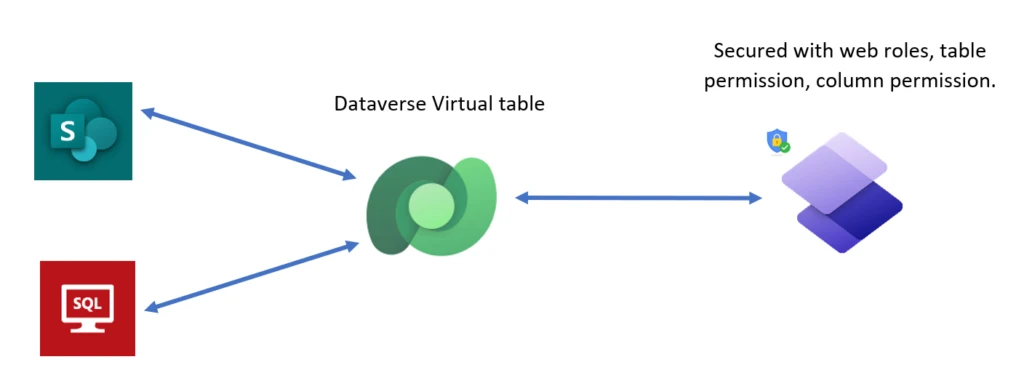Bring data from anywhere with Dataverse virtual table and Power Automate cloud flow integration in Power Pages
Is your line of business application data present in multiple systems, and do you want to quickly build a secured external facing website using this data for your partners and customers?
We are happy to announce a public preview for two new capabilities in Power Pages to build your site by bringing data from external systems using Dataverse virtual table and Power Automate cloud flow integration.
Dataverse virtual table
Power Pages now supports Dataverse virtual tables created using virtual connector provider for SQL server and SharePoint.

What are Virtual Tables?
Virtual tables connect to existing data outside of Dataverse allowing Power Pages to treat it like local data. If you have a list that stores all your product data in SharePoint, a virtual table lets you access that data within a web page and also provide relationships between Dataverse tables and the SharePoint lists. You can even build your custom web page using code to make changes directly in the source, just by using the APIs that Power Pages provides.
What are the benefits of using virtual tables?
Ever wondered how you can quickly build a Power Pages site from your existing SQL Server database table? Now you can use virtual tables. If you have product information in SQL server, and it is connected to various applications, bring this information to Power Pages site without data duplicating in Dataverse. You can also integrate the product table with other Dataverse tables using relationships and build a standard data model.
You can apply Power Pages authorization model using web roles, table permissions, and column permissions to secure your data.
For more information, visit detailed documentation for virtual table support in Power Pages.
Power Automate cloud flow
By invoking Power Automate cloud flows from Power Pages, you can trigger the flow based on certain events or user actions, such as clicking a button, submitting a form, calling an external API for automating data collection and processing, streamlining approvals and workflows, and improve customer service.
How do they work together?
Define your cloud flow using Power Pages trigger
Power Pages introduced a native Power Automate trigger to initiate cloud flow and return a response back to the site. Flow action can call a plethora of Power Automate tools for digital process automation with 1,000+ pre-built connectors to interact with various systems.

Secure your flows with Power Pages security framework
Add cloud flow to your site by navigating to Set up workspace and applying a web role. All flows part of Dataverse solutions with Power Pages triggers are available here to use on the site. When you add a flow to the Power Pages site, a unique URL is generated, that will allow you to call a flow from the site.

Invoke flow from website using API
After the flow is associated with a site, using an auto-generated unique URL cloud flow can be invoked from the Power Pages site. Pass the input parameter defined in Power Pages trigger in the request body and receive a cloud flow return value as an API response.

For more information, visit detailed documentation for invoke Power Automate cloud flow from Power Pages
